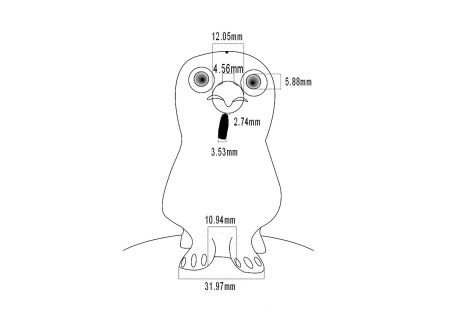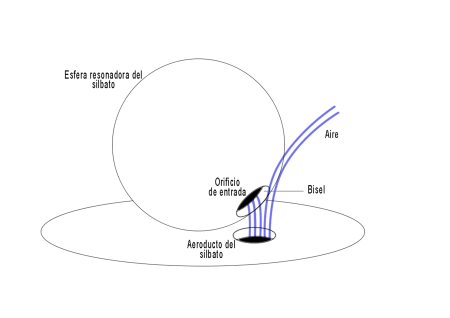

Figure 15: The bird. Drawing by Mónica Ayala
This study has made it possible to determine that the structure of this bottle is a system designed for acoustic reproduction using aerodynamic and/or hydraulic action. It is an artefact created to generate sound through the compressed air expelled by the movement of water from inside the bottle. As a mechanism of 'high technology' for that time, it was possible to transcend the domestic function of the object. This was possible through the use of technical experience, wisdom and knowledge, which today can be explained by hydraulic and aerodynamic physical science, but which possibly were seen in the past as a spiritual need.
The acoustic system constitutes of:
The whistle is contained in the head of the bird and is by itself is a musical instrument. It is complicated to catalogue this vessel using the von Hornbostel and Sachs (1914) classification (de Arce and Gili 2013), because on the one hand it fits into the flute category (421.13) but also into the flute with duct category (421.2) (Bermúdez 1985). We accept the definition of de Arce and Gili (2013, appendix 19) and propose classifying the object as follows: 421.221.42 (indirect blow ocarina) or whistle bottle.
The acoustic device is inside the hollowed head of the bird (envoltura externa - cavidad), which has eight holes, as detailed in Table 2, no.6 (Figure 14).


The sound device on the whistle bottle works as follows (Figure 14):
Exciter or edge tone system: All flutes work from the same principle. Compressed air is sent through a pipe over a pointed or corner-shaped object called a labium. This phenomenon was studied by Marc Pierre Verge at the Technical University (TU) of Eindhoven (Verge 1995):
Flue instruments can be defined as acoustical systems producing sound as a result of the coupling between a hydrodynamically unstable flow and a resonant acoustic field in a pipe … The flow is generated by blowing through a narrow duct called flue. At the flue exit, a free jet is formed by flow separation. The jet flows across the mouth of the instrument and is directed towards a sharp edge called labium. Because of its intrinsic instability, the jet is very sensitive to perturbations acting on it. At the flue exit, the jet is submitted to the transverse acoustic field of the pipe. The perturbations propagate on the jet and are amplified. This results in a flipping of the jet on each side of the labium at the same frequency as that of the acoustic field … (Verge 1995, 12-13)
The resonator consists of a cavity with a certain geometry, containing air that can enter into resonance with the exciter that is physically associated with it; in part, its role is to amplify the sound. Because of its geometry the resonator enters into a feedback process with the exciter system, imposing certain tones. The resonators can have various shapes e.g. cylindrical, conical, spherical. Whistles and ocarinas are flutes because they work under these conditions.
Globular whistles are flutes and consist of a resonator, which can be spherical, oval or a more irregular shape. In the case of the whistle bottle in the current study, it has a globular whistle attached to the upper front part of the platform located in the neck of the bird. On this platform there is a perforation (air duct) that directs the air towards the hole in the spherical resonator. The edge of the entrance hole is bevelled (bisel) where the air oscillates (Figure 16).

Internet Archaeology is an open access journal based in the Department of Archaeology, University of York. Except where otherwise noted, content from this work may be used under the terms of the Creative Commons Attribution 3.0 (CC BY) Unported licence, which permits unrestricted use, distribution, and reproduction in any medium, provided that attribution to the author(s), the title of the work, the Internet Archaeology journal and the relevant URL/DOI are given.
Terms and Conditions | Legal Statements | Privacy Policy | Cookies Policy | Citing Internet Archaeology
Internet Archaeology content is preserved for the long term with the Archaeology Data Service. Help sustain and support open access publication by donating to our Open Access Archaeology Fund.